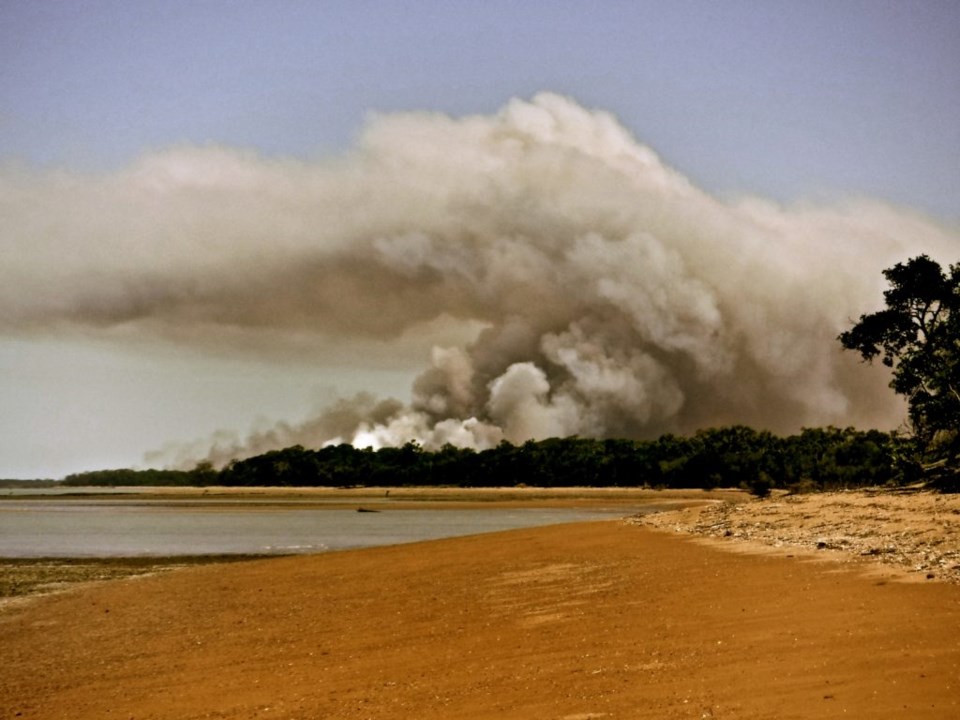
Our news headlines in 2020 included scenes of hellish infernos from Australia, which have global implications.
There are two types of climate change occurring right now. One is related to weather and environmental patterns, the other to do with political climate.
There are two types of heat in the air right now. One type is the actual scorching temperature from the flames and embers of Australia’s bushfire crisis. The other heat is on the streets of Sydney, steaming from the heads of about 30,000 people demanding answers and action from their government.
You may be asking, what are 30,000 people standing out there for, while Australia’s largest city has smoke periodically blow through its skyscrapers?
The questions and points of anger are stirring, for obvious reasons, but from multiple angles.
Lives and homes have been lost. Australia’s unique wildlife is taking an all-time critical blow. Millions of tonnes of carbon has been released into the atmosphere. An area the size of Nova Scotia has been burned.
So, what is the Prime Minister of Australia supposed to do about that? When you are voted to represent a country, you can expect your face to show up on signs during protests, as it has. However, what is one person realistically expected to do?
I believe a lot of people in democratic societies see their leader as a representation of their own national identity, especially when that leader is on the world stage. Australia has not been on track for curbing its climate change impacts and carbon emissions, despite its goals and the Paris Agreement.
Who, ultimately, regulates what is done with a nation’s resources and landscape at the large scale? Your top-tier politicians. So here comes the pressure, but with a complex twist.
Climate change is said to have propelled Australia into its worst memorable bushfire crisis in modern history by drying up a continent that already holds the title for “world’s driest continent” (after Antartica, technically). Australia is also the least forested continent, so with the vast majority of the nation’s trees sitting on the eastern edge of the country, it’s a shame that this geographical area is experiencing the worst of the fires. The eastern side of Australia also holds the country’s highest biodiversity and human population. Double whammy.
So the dry tinder and kindling are sitting still, almost just waiting to be sparked. By lightning, a cigarette butt, or an irresponsible person. With the Australian authorities recently charging 24 people for igniting these fires, others might be scratching their heads and asking, why do we need climate change protests?
Furthermore, natural oceanic climate variations such as El Nino and the Indian Ocean Dipole have naturally dehydrated Australia this year, and dumped lethal floods onto Kenya at the same time. This adds another considerable variable to the origin of these fires.
The bottom line is that many Australians and others around the world are terrified, at a deeper level, for what fire events this size imply.
We know science shows the parts per million of carbon rising unreasonably high for the first time in 650,000 years. We know that we, as humans, are responsible for what is dubbed the Holocene extinction event, which translates to extinction caused by human activity. We know Australian agricultural soils and native vegetation will no longer be able to work together as effectively after the flames.
If we want to look at answers regarding who and what started the catastrophic fires, there are several correct answers.
Of course, we should be able to rely on our government leaders to make positive adjustments for our country and the world’s well-being. Absolutely, charge those who exhibit behaviours reckless enough to start massive fires. We definitely need to acknowledge the coincidence that other oceanic influences are at play, but also not dismiss that they were dealing with a record-broken, hot and dry Australia.
The smoke is literally blowing across the globe. Satellite images have picked up on the clouds being pushed over South America, and will continue to travel with the Westerlies for some time. It may even circumnavigate the world.
These fires will likely alter the way Australia’s climate self-regulates itself for some time to follow. This may have influences on neighbouring countries and their climates, spawning a domino effect of interconnected climate patterns being tilted off-centre. The Earth itself is like one enormous ecosystem, with all parts connected. It may not be directly observable, but these fires will literally have ripple effects around the world.
I end with this: Bless our Australian friends and families suffering losses, hopelessness, and fear during these challenging times.
I know Aussies. I’ve been among them in times of natural disaster before. With the environment, community, and personal lives hit so hard, I know one thing — Aussies are as resilient as they come, and will pull together in the best capacity humanly possible.
Meanwhile, we can only hope that my favourite hero, Australian wildlife expert and environmentalist Steve Irwin, who died in 2006, will shed a tear from above and give Australia the soaking it needs.


